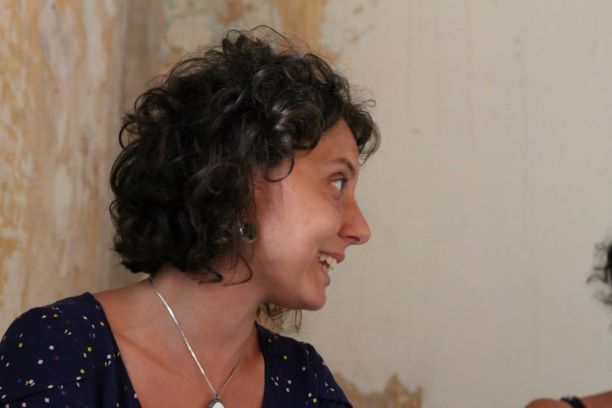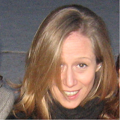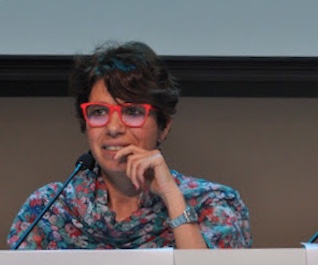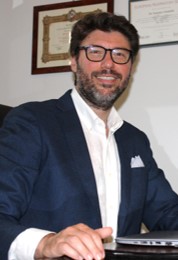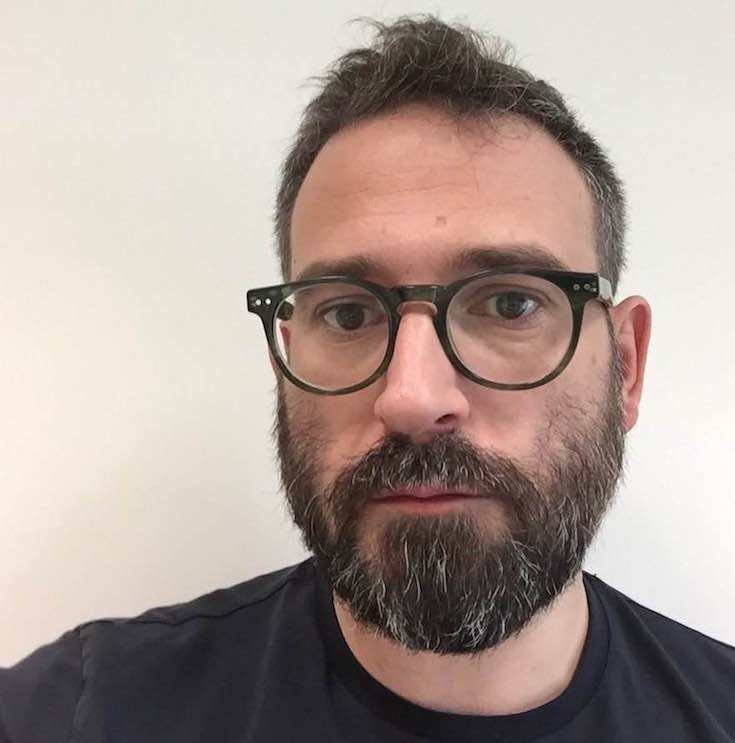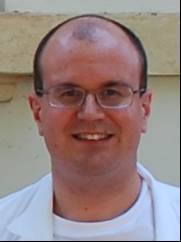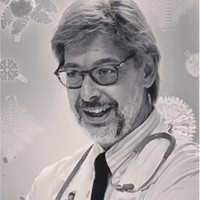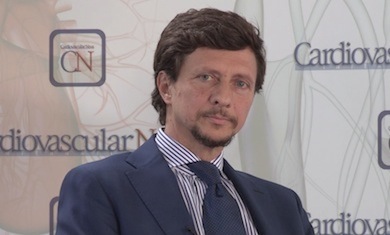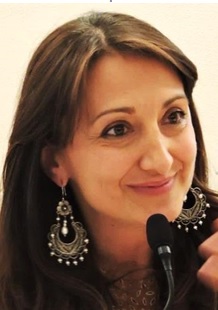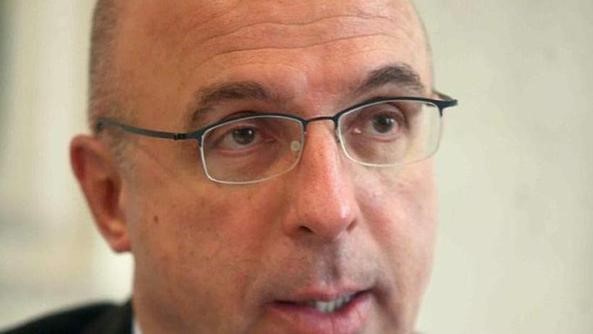Studying at the University of Verona
Here you can find information on the organisational aspects of the Programme, lecture timetables, learning activities and useful contact details for your time at the University, from enrolment to graduation.
Academic calendar
The academic calendar shows the deadlines and scheduled events that are relevant to students, teaching and technical-administrative staff of the University. Public holidays and University closures are also indicated. The academic year normally begins on 1 October each year and ends on 30 September of the following year.
Course calendar
The Academic Calendar sets out the degree programme lecture and exam timetables, as well as the relevant university closure dates..
| Period | From | To |
|---|---|---|
| INF VR - 1° anno 1° sem | Oct 1, 2019 | Dec 20, 2019 |
| INF VR - 2° anno 1° sem | Oct 1, 2019 | Dec 20, 2019 |
| INF VR - 3° anno 1° sem | Oct 21, 2019 | Dec 20, 2019 |
| INF VR - 3° anno 2° sem | Jan 27, 2020 | Mar 13, 2020 |
| INF VR - 1° anno 2° sem | Feb 3, 2020 | Apr 3, 2020 |
| INF VR - 2° anno 2° sem | Apr 20, 2020 | Jun 19, 2020 |
| Session | From | To |
|---|---|---|
| INF VR - sessione invernale (1°-2° anno) | Jan 7, 2020 | Jan 31, 2020 |
| INF VR - sessione invernale (3° anno) | Jan 7, 2020 | Jan 24, 2020 |
| INF VR - sessione estiva (3° anno 1^ parte) | Mar 23, 2020 | Apr 3, 2020 |
| INF VR - sessione estiva (1° anno 1^ parte) | Apr 15, 2020 | Apr 24, 2020 |
| INF VR - sessione estiva (2° anno) | Jun 22, 2020 | Jul 24, 2020 |
| INF VR - sessione estiva (3° anno 2^ parte) | Jul 15, 2020 | Jul 31, 2020 |
| INF VR - sessione estiva (1° anno 2^ parte) | Jul 22, 2020 | Jul 31, 2020 |
| INF VR - sessione autunnale | Sep 1, 2020 | Sep 30, 2020 |
| Session | From | To |
|---|---|---|
| 1^ SESSIONE | Oct 1, 2020 | Nov 30, 2020 |
| 2^ SESSIONE | Mar 1, 2021 | Apr 30, 2021 |
| Period | From | To |
|---|---|---|
| FESTIVITA' OGNISSANTI | Nov 1, 2019 | Nov 1, 2019 |
| FESTIVITA' IMMACOLATA CONCEZIONE | Dec 8, 2019 | Dec 8, 2019 |
| Vacanze di Natale | Dec 24, 2019 | Jan 6, 2020 |
| VACANZE DI PASQUA | Apr 10, 2020 | Apr 15, 2020 |
| FESTA DELLA LIBERAZIONE | Apr 25, 2020 | Apr 25, 2020 |
| FESTIVITA' DEL LAVORO | May 1, 2020 | May 1, 2020 |
| FESTIVITA' DEL SANTO PATRONO SAN ZENO | May 21, 2020 | May 21, 2020 |
| FESTA DELLA REPUBBLICA | Jun 2, 2020 | Jun 2, 2020 |
| Description | Period | From | To |
|---|---|---|---|
| INF VR - tirocinio 2° anno 1^ esp | INF VR - tirocinio 2° anno 1^ esp | Feb 3, 2020 | Apr 3, 2020 |
| INF VR - tirocinio 3° anno 1^ esp | INF VR - tirocinio 3° anno 1^ esp | Apr 6, 2020 | May 22, 2020 |
| INF VR - tirocinio 1° anno 1^ esp | INF VR - tirocinio 1° anno 1^ esp | Apr 27, 2020 | Jun 9, 2020 |
| INF VR - tirocinio 3° anno 2^ esp | INF VR - tirocinio 3° anno 2^ esp | Jun 1, 2020 | Jul 14, 2020 |
| INF VR - tirocinio 1° anno 2^ esp | INF VR - tirocinio 1° anno 2^ esp | Jun 15, 2020 | Jul 17, 2020 |
| INF VR - tirocinio 2° anno 2^ esp | INF VR - tirocinio 2° anno 2^ esp | Sep 1, 2020 | Oct 8, 2020 |
| INF VR - tirocinio 3° anno 3^ esp | INF VR - tirocinio 3° anno 3^ esp | Sep 4, 2020 | Oct 15, 2020 |
Exam calendar
Exam dates and rounds are managed by the relevant Medicine Teaching and Student Services Unit.
To view all the exam sessions available, please use the Exam dashboard on ESSE3.
If you forgot your login details or have problems logging in, please contact the relevant IT HelpDesk, or check the login details recovery web page.
Should you have any doubts or questions, please check the Enrollment FAQs
Academic staff
 marialivia.alga@univr.it
marialivia.alga@univr.it
 elisabetta.allegrini@aovr.veneto.it
elisabetta.allegrini@aovr.veneto.it
 michele.bertani@univr.it
michele.bertani@univr.it
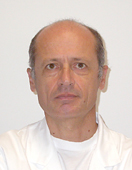
Bisoffi Zeno
 zeno.bisoffi@sacrocuore.it
zeno.bisoffi@sacrocuore.it
 +390456013326
+390456013326
 federica.bonato@aor.veneto.it
federica.bonato@aor.veneto.it
Cunico Laura
 laura.cunico@univr.it
laura.cunico@univr.it
 0444752922
0444752922
 francesca.defanti@univr.it
francesca.defanti@univr.it
 stefano.detogni@univr.it
stefano.detogni@univr.it
 massimo.dibenedetto@univr.it
massimo.dibenedetto@univr.it
 jessica.longhini@univr.it
jessica.longhini@univr.it
 laura.messina@univr.it
laura.messina@univr.it
 nicola.pelizzari@univr.it
nicola.pelizzari@univr.it
Pighi Michele
 michele.pighi@univr.it
michele.pighi@univr.it
 0458122320
0458122320
 sara.pilotto@univr.it
sara.pilotto@univr.it
 zenogabriele.poli@univr.it
zenogabriele.poli@univr.it
 er.vedovi@virgilio.it
er.vedovi@virgilio.it
 liria.veronesi@univr.it
liria.veronesi@univr.it
 tamara.zerman@univr.it
tamara.zerman@univr.it
 lzivelonghi@aulss9.veneto.it
lzivelonghi@aulss9.veneto.it
Study Plan
The Study Plan includes all modules, teaching and learning activities that each student will need to undertake during their time at the University.
Please select your Study Plan based on your enrollment year.
1° Year
| Modules | Credits | TAF | SSD |
|---|
Pathophysiology applied at Nursing
Biomolecular fondamentals of life
Morphological and functional fundamentals of life
General and methodological nursing
Health and safety promotion
English for Nursing
2° Year activated in the A.Y. 2020/2021
| Modules | Credits | TAF | SSD |
|---|
Application of diagnostic and therapeutic processes
Chronic clinical nursing care
Clinical nursing care in surgical area
Clinical nursing care in medical area
Relationship in nursing care
Clinical practice (2nd year)
3° Year activated in the A.Y. 2021/2022
| Modules | Credits | TAF | SSD |
|---|
Critical nursing care
Evidence based nursing
Health organizations and care processes
Legal, bioethic and deontological principles of professional practice
Maternal and paediatric nursing care
Clinical practice (3rd year)
| Modules | Credits | TAF | SSD |
|---|
Pathophysiology applied at Nursing
Biomolecular fondamentals of life
Morphological and functional fundamentals of life
General and methodological nursing
Health and safety promotion
English for Nursing
| Modules | Credits | TAF | SSD |
|---|
Application of diagnostic and therapeutic processes
Chronic clinical nursing care
Clinical nursing care in surgical area
Clinical nursing care in medical area
Relationship in nursing care
Clinical practice (2nd year)
| Modules | Credits | TAF | SSD |
|---|
Critical nursing care
Evidence based nursing
Health organizations and care processes
Legal, bioethic and deontological principles of professional practice
Maternal and paediatric nursing care
Clinical practice (3rd year)
Legend | Type of training activity (TTA)
TAF (Type of Educational Activity) All courses and activities are classified into different types of educational activities, indicated by a letter.
Critical nursing care [Matricole pari] (2021/2022)
The teaching is organized as follows:
Learning outcomes
The course aims to investigate the pathophysiological, clinical and caring aspects of different types of emergency situations either in hospital, home and community setting. This course will focus on risk assessment and identification of patient’s complexity and intervention priorities. GENERAL SURGERY (CHIRURGIA D’URGENZA): The aim of the course is to provide the student with the knowledge of the major emergency pathologies that may include surgical disises starting from epidemiology to deepen clinical presentation in abdominal and thoracic pathologies. EMERGENCY MEDICINE The course is aimed to increase the knowledge on pathophysiological and clinical aspects of the more relevant emergency problems in the nursing clinical practice. SURGICAL ADVANCED NURSING The aim of the course is to investigate physiopathologic, clinical and emergency aspect of emergency situations selectet according to their epidemiological relevance and exemplarity in different contexts (territory,domicile, hospitail). The course it also focuses on achieving risks factors for caring pazients with chest and cardiac surgery problems. ANAESTHESIOLOGY The course aims to provide the students with the adequate knowledge related to medical emergencies. Particular attention is paid to the clinical-diagnostic pathway of specific pathologies, so as to provide the students with the information which are required to differentiate them and partecipate to an appropriate and rapid diagnostic procedure. Single treatments are individualized within their specific context (territory, home, ambulante, E.R., floor, I.C.U, etc). Furthermore, all treatments are proposed on the basis of available Evidence Based Medicine. INTENSIOVE CARE NURSING: Learing outcome: To recognize critical situations in patients in the intensive care unit, to describe the specific monitoring interventions related to patients' clinical evolution, to describe the specific support strategies for patient and family in ICU EMERGENCY NURSING: The aim of the cousre is to undertsnad physiopathological aspects, clinical and nursing aspects in emergency situation, selected based on their epidemiological and exemplarity importance in different situations (territory, hospital, home).
Program
------------------------
MM: CHIRURGIA D'URGENZA
------------------------
Vascular Urgencies: From Acute Mesenteric Ischemia to Chronic Vascular Insufficiency Blunt abdominal trauma and polytrauma: definition, classification of diagnostic iter and therapeutic timing Digestive hemorrhage: Clinical presentation and treatment. Pain in the right iliac fossa: epidemiology, clinical presentation and differential diagnosis. Acute and chronic pancreatitis: diagnostic flow chart and role of surgeon. Acute diverticulitis: from physiopathology to clinic with emphasis on diagnostic criteria, classifications and treatment strategies. Acute disease of the esophagus: from perforations to the effect of caustic swallowing. Intestinal occlusion: clinical, diagnosis and therapy.
------------------------
MM: MEDICINA D'URGENZA
------------------------
APPROACH TO ACUTE CHEST PAIN IN THE EMERGENCY ROOM. Rapid recognition of life-threatening conditions (Acute Coronary Syndromes, Pulmonary Embolism, Hypertensive Pneumothorax, Mediastinitis, Aortic Dissection, Pericardial Tamponade). Differential diagnosis (principles). ACUTE CORONARY SYNDROMES (ACS) ST-Elevation Myocardial Infarction (STEMI), Non ST-Elevation Myocardial Infarction (NSTEMI), Unstable Angina (UA). Definitions, pathophysiology, symptoms. Role of the nurse in the management of patients with ACS. Principles of treatment of ACS. Recognition and management of the main complications, like cardiogenic shock and arrhythmias (particularly Ventricular Fibrillation and III-degree Atrioventricular Block. The main drugs used for cardiovascular urgencies and emergencies (mechanism of action, indications/contraindications, adverse reactions). AORTIC DISSECTION Definition, pathophysiology, symptoms. Principles of diagnosis and treatment. CARDIOGENIC ACUTE PULMONARY EDEMA Definitions, pathophysiology, symptoms. Principles of diagnosis and treatment. Role of the nurse in the management of patients with cardiogenic acute pulmonary edema. NON-CARDIOGENIC ACUTE PULMONARY EDEMA (Acute Respiratory Distress Syndrome, ARDS) Definition, pathophysiology, symptoms. Principles of diagnosis and treatment. Role of the nurse in the management of patients with non-cardiogenic acute pulmonary edema. VENOUS THROMBOEMBOLISM (VTE) Deep Venous Thrombosis (DVT) and Pulmonary Embolism. Definition, pathophysiology, symptoms. Risk factors. Strategies for VTE prevention. Diagnostic algorithms. Role of the Well’s score (or other similar scores) and of D-dimer. Principles of VTE treatment. MAIN ACUTE ORGAN FAILURES. ACUTE LIVER FAILURE Definition, pathophysiology, symptoms. Porto-Systemic Encephalopathy. Main acute complications in the cirrhotic patient. Principles of diagnosis and treatment. MAIN METABOLIC URGENCIES. MAIN ACUTE COMPLICATIONS IN THE PATIENT WITH DIABETES MELLITUS. DIFFERENT TYPES OF DIABETIC COMA. Classification. Definition, pathophysiology, symptoms. Principles of diagnosis and treatment. Role of the nurse in the management of patients with diabetic coma. MAIN INTOXICATIONS/POISONING Approach in the emergency room. Clinical recognition based on physical examination (vital signs, ocular signs, body temperature, halitosis, cutaneous discoloration). Acetaminophen intoxication and other intoxications by commonly used drugs. Acute alcoholic intoxication. Opioid intoxication. Cocaine intoxication. CO intoxication.
------------------------
MM: INFERMIERISTICA CHIRURGICA SPECIALISTICA
------------------------
Post-operative nursing assistance in complex situations Nursing care in the postoperative course of esophagectomy, relating to: - resumption of nutrition (from NE to OS) and education to avoid early and late complications - long-term needs and symptom management Nursing assistance in the postoperative course of lobectomy / pneumectomy, relating to: - chest drainage management - postoperative respiratory rehabilitation - chest pain and movement and early mobilization - post-discharge needs: activity tolerance and deconditioning, dyspnea Nursing assistance in the postoperative course of coronary artery bypass surgery with still heart, through the use of cardiopulmonary bypass, and beating heart surgery, referred to in OFFPUMP., Relating to: - hospitalization in intensive care and discharge criteria in the OU and "specific" monitoring - early mobilization, mode of motion by sternal incision - Cognitive disorders of the cardiac surgery patient: relevance and risk factors, critical period, association D. hypoactive and negative outcomes, prevention interventions - Rehabilitation and self-care actions: respiratory gymnastics, cardiomotor and food activities and lifestyles Transfusion and infusion of blood components: - Pre-transfusion investigations - Homologous blood transfusion - Stages of the transfusion process - Request for the blood component and sampling for compatibility tests - Bedside identification with double pre-start transfusion check
------------------------
MM: RIANIMAZIONE
------------------------
* oxygen delivery and its main disturbances * acid-base balance and its main disturbances * respiratory failure * shock * trauma
------------------------
MM: INFERMIERISTICA IN SITUAZIONI DI CRITICITA'
------------------------
1. critical and critical care patient: the care peculiarities. 2. Supervision and monitoring of the patient with neurological and cardiorespiratory instability: a. Monitoring and management of respiratory function: - Invasive ventilation: purposes and management of endotracheal intubation and artificial ventilation; monitoring and prevention strategies of early and late complications related to endotracheal intubation and respiratory device; - Non-invasive ventilation: indications, contraindications, monitoring and adaptation strategies and prevention of complications in the NIV; - Tracheotomy: indications, main types of access, tracheal stoma care, patient care tracheostomy feeding and phonation. b. assessment indicators and monitoring of neurologic function. c. Monitoring and management of cardiovascular function: indications and management of invasive blood pressure monitoring and PVC. d. Intra aortic baloon pump: indications, controindications and patient monitoring 3. Monitoring, expected effects, side effect, interactions and responses to intravenous complex drug treatments. 4. Impact of stay in the ICU: - Peculiarities in critical care patient’s hygiene and infection prevention; - Stress and adaptation of the patient and the family. 5. Nutritional approach to critical patients.
------------------------
MM: INFERMIERISTICA CLINICA NEI SERVIZI DI EMERGENZA
------------------------
The emergency and health emergency system Triage in the emergency room Cardiovascular arrest and advanced resuscitation in the extra-hospital emergency Non-technical skills Approach to polytrauma in the extra-hospital emergency The hypothermic patient
Bibliography
Examination Methods
Ingrated exam with others of the same teaching modules. Written test consisting of 60 quizzes (10 per module) multiple choice.
Career prospects
Module/Programme news
News for students
There you will find information, resources and services useful during your time at the University (Student’s exam record, your study plan on ESSE3, Distance Learning courses, university email account, office forms, administrative procedures, etc.). You can log into MyUnivr with your GIA login details: only in this way will you be able to receive notification of all the notices from your teachers and your secretariat via email and soon also via the Univr app.
Gestione carriere
Guida ai programmi degli insegnamenti
Guida ai programmi degli insegnamenti
Documents
| Title | Info File |
|---|---|
|
|
pdf, it, 1594 KB, 12/12/22 |
|
|
pdf, it, 1310 KB, 02/09/21 |
Orario lezioni
Si pubblicano gli orari delle lezioni relativi al 2° semestre A.A. 2023/2024
Gli orari potrebbero subire alcune modifiche, pertanto si consiglia di consultare l'orario delle lezioni giornalmente nell‘area riservata MyUnivr e/o ORARIO LEZIONI.
Documents
| Title | Info File |
|---|---|
|
|
pdf, it, 126 KB, 06/03/24 |
|
|
pdf, it, 128 KB, 09/02/24 |
|
|
pdf, it, 120 KB, 18/03/24 |
|
|
pdf, it, 122 KB, 18/03/24 |
|
|
pdf, it, 125 KB, 20/03/24 |
|
|
octet-stream, it, 32 KB, 04/04/24 |
Graduation
Documents
| Title | Info File |
|---|---|
|
|
pdf, it, 242 KB, 19/01/24 |
|
|
pdf, it, 80 KB, 06/04/24 |
|
|
pdf, it, 43 KB, 06/04/24 |
|
|
pdf, it, 44 KB, 09/04/24 |
|
|
pdf, it, 148 KB, 06/04/24 |
|
|
pdf, it, 108 KB, 06/04/24 |
|
|
pdf, it, 115 KB, 06/04/24 |
|
|
pdf, it, 1487 KB, 18/02/22 |
|
|
pdf, it, 437 KB, 22/03/24 |
|
|
pdf, it, 957 KB, 22/03/24 |
|
|
pdf, it, 424 KB, 19/01/24 |
List of theses and work experience proposals
| theses proposals | Research area |
|---|---|
| Progetto WITHSTAND- Supportare la resilienza negli eventi avversi in sanità | The Human Mind and Its Complexity: Cognitive science, psychology, linguistics, philosophy of mind - Clinical and health psychology |
Tirocinio professionalizzante
Finalità del Tirocinio
Le attività di tirocinio sono finalizzate a far acquisire allo studente competenze specifiche previste dal profilo professionale. Per conseguire tali finalità formative, si possono attivare convenzioni con strutture, che rispondano ai requisiti di idoneità per attività, dotazione di servizi e strutture.
I 60 crediti minimi riservati al tirocinio sono da intendersi come impegno complessivo necessario allo studente per raggiungere le competenze professionali “core” previste dal rispettivo profilo professionale.
Il tirocinio professionale comprende:
- sessioni tutoriali che preparano lo studente all’esperienza;
- esercitazioni e simulazioni in cui si sviluppano le abilità tecniche, relazionali e metodologiche in situazione protetta prima o durante la sperimentazione nei contesti reali;
- esperienze dirette sul campo con supervisione;
- sessioni tutoriali e feedback costanti;
- compiti didattici, elaborati e approfondimenti scritti specifici e mandati di studio guidato.
La valutazione delle competenze acquisite in tirocinio.
Le esperienze di tirocinio devono essere progettate, valutate e documentate nel percorso dello studente. Durante ogni esperienza di tirocinio lo studente riceve valutazioni formative sui suoi progressi sia attraverso colloqui e schede di valutazione.
Al termine di ciascun anno di corso viene effettuata una valutazione sommativa (certificativa) per accertare i livelli raggiunti dallo studente nello sviluppo delle competenze professionali attese. La valutazione viene effettuata da una Commissione presieduta dal Coordinatore della Didattica Professionale (CDP), e composta da almeno un docente e da un Tutor professionale. Tale valutazione è la sintesi delle valutazioni formative, via via, documentate durante l’anno di corso, il profitto raggiunto negli elaborati scritti e le performance delle abilità tecniche assistenziali e relazionali dimostrate all’esame di tirocinio che può essere realizzato con esami simulati, colloqui, prove scritte applicative.
L’esame annuale di tirocinio prevede un unico appello per anno accademico, salvo particolari situazioni per le quali la commissione didattica potrà concedere un appello straordinario.
La valutazione sommativa del tirocinio sarà espressa e registrata nella carriera in trentesimi in base al livello di raggiungimento degli obiettivi. Le modalità di registrazione del voto di profitto sono:
- “assente” pre-iscritto che non ha frequentato alcuna esperienza di tirocinio;
- “ritirato” sospensione durante il tirocinio per problemi di salute, gravidanza o per motivazioni personali;
- “insufficiente” non raggiungimento del livello atteso negli obiettivi formativi (anche se lo studente ha sospeso la frequenza al tirocinio o non sostenuto l’esame finale).
Prerequisiti di accesso al tirocinio.
Il Coordinatore della Didattica Professionale (CDP), ammette alla frequenza dell’esperienza di tirocinio previsto per l’anno di corso, gli studenti che hanno frequentato regolarmente:
- le attività teoriche, in particolare gli insegnamenti delle discipline professionali dell’anno in corso e dell’anno precedente
- laboratori professionali ritenuti propedeutici al tirocinio
Ulteriori dettagli sono disciplinati dal Regolamento del corso di studio
Per maggiori informazioni consultare la pagina del servizio
Documents
| Title | Info File |
|---|---|
|
|
pdf, it, 343 KB, 16/11/23 |
Attività Seminariali/a scelta dello studente
Attività Seminariali/a scelta dello studente
Documents
| Title | Info File |
|---|---|
|
|
pdf, it, 121 KB, 12/10/23 |
|
|
pdf, it, 344 KB, 12/10/23 |
|
|
octet-stream, it, 39 KB, 07/12/22 |
|
|
pdf, it, 703 KB, 10/11/23 |
Guida alle attività formative
Guida alle attività formative
Documents
| Title | Info File |
|---|---|
|
|
pdf, it, 1396 KB, 28/11/23 |
|
|
pdf, it, 1269 KB, 31/10/23 |
|
|
pdf, it, 554 KB, 02/11/23 |
Linee guida per riconoscimento cfu
Lo studente che intende chiedere il riconoscimento di moduli o insegnamenti pregressi dovrà presentare domanda, entro il 30 novembre dell’anno accademico in corso, seguendo le indicazioni indicate al link seguente: https://www.univr.it/it/i-nostri-servizi/segreterie-studenti/gestione-carriere-studenti-medicina-e-chirurgia/riconoscimento-crediti-acquisiti-da-una-carriera-pregressa-medicina
Documents
| Title | Info File |
|---|---|
|
|
pdf, it, 295 KB, 09/11/21 |
Student login and resources
Attività didattiche regime part-time
Modalità di richiesta
La domanda di iscrizione part-time può essere presentata all'inizio di ogni anno accademico e comunque entro il 30 novembre di ogni anno. Entro lo stesso termine, se necessario, lo studente potrà richiedere di tornare al regime full-time. Al link seguente la pagina del servizio https://www.univr.it/it/i-nostri-servizi/segreterie-studenti/flessibilita-nella-frequenza-dei-corsi/possibilita-di-iscrizione-part-time-e-ripristino-full-time
Una volta inviata la domanda, lo studente concorda in via preventiva con il Coordinatore della didattica professionale (CDP), il piano di studi che intende perseguire nel periodo di part-time compilando il modulo in allegato
Documents
| Title | Info File |
|---|---|
|
|
octet-stream, it, 1309 KB, 21/10/22 |
Appelli d'esame
Documents
| Title | Info File |
|---|---|
|
|
pdf, it, 124 KB, 17/04/24 |

